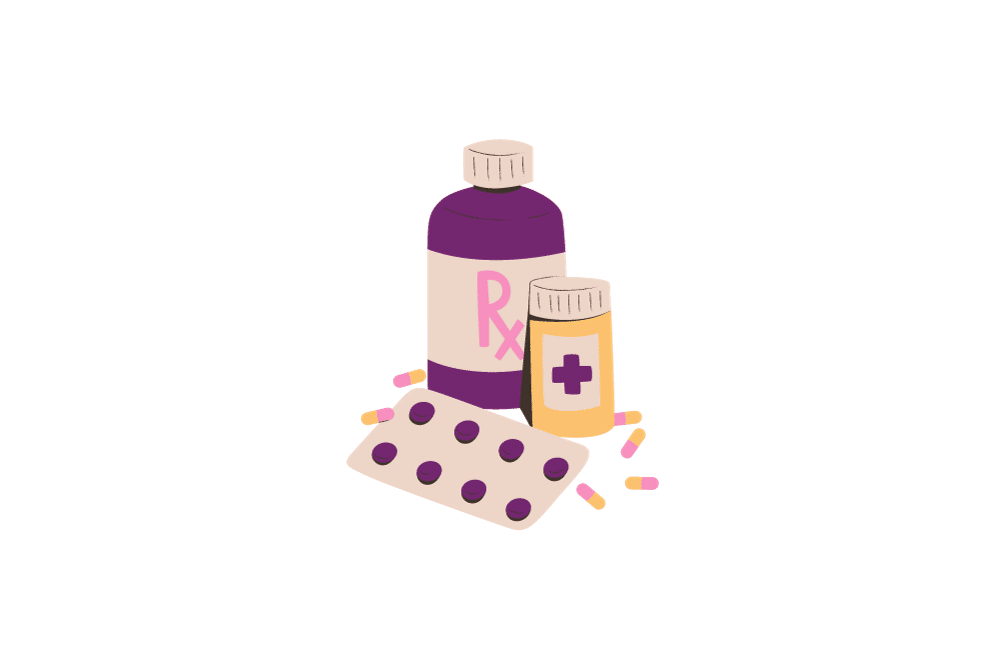STIs, or Sexually Transmitted Infections, represent the initial stage of an infection that may not have developed into a full-blown disease. In contrast, STDs, or Sexually Transmitted Diseases, are infections in their more advanced stages, often with more severe symptoms and health implications. Understanding this progression from STI to STD is the key to effective prevention, early detection, and effective treatment.
If you’ve ever found yourself confused about these terms, you’re not alone! Many people use them interchangeably, but they have distinct meanings that are important for maintaining a healthy life. In this article, we dive into what STIs and STDs are, how they differ, and why knowing these differences matters for your health and well-being.
What Are STIs? Demystifying Sexually Transmitted Infections
STIs, or sexually transmitted infections, are infections primarily spread through sexual contact, including oral, vaginal or anal sex. They are caused by sexually transmitted bacteria, viruses, or parasites and can be transmitted without noticeable symptoms. Unlike STDs (sexually transmitted diseases), an STI may not always develop into a disease, which makes understanding and identifying them essential for sexual health.
These infections occur when pathogens such as bacteria, viruses, or parasites enter the body, often during sexual activity. Common examples of STIs include genital herpes, genital warts, chlamydia, gonorrhoea, and viral hepatitis, which can be spread through skin-to-skin contact or the exchange of bodily fluids. Many STIs, especially in their early stages, might not present obvious signs, emphasising the importance of regular screening and discussion with a healthcare provider.

Exploring STDs: A Closer Look at Sexually Transmitted Diseases
Sexually transmitted diseases (STDs) are the more advanced stages of infections initially acquired through sexual contact. When a sexually transmitted infection progresses and causes significant harm to the body, it is then classified as a sexually transmitted disease (STD). This distinction is key to understanding the severity and impact of these conditions on overall health.
STDs encompass a range of illnesses that can have more severe symptoms and long-term effects compared to STIs. These diseases often result from untreated or inadequately treated infections and can lead to serious health problems, including infertility, organ damage, and increased risk of contracting other diseases.
Common STDs include syphilis, gonorrhoea, chlamydia, and HIV/AIDS. STD symptoms can range from mild irritations to severe pain. In some cases, STDs may be asymptomatic, meaning they show no noticeable symptoms, making regular health check-ups and open communication with a healthcare provider essential.
STDs can impact anyone who is sexually active, regardless of gender or sexual orientation. Disease control and prevention involve regular STD screening (find out how to get tested for STDs), safe sexual practices, and seeking prompt treatment if an infection occurs. By understanding the risks and signs of STDs, individuals can make informed decisions about their sexual health and take proactive steps to protect themselves and their partners.

STI vs STD: Breaking Down the Key Differences
Definition and Development
The primary difference between an STI and an STD lies in their stages of development. An STI refers to the initial infection caused by bacteria, viruses, or parasites transmitted through sexual contact. This infection may or may not show noticeable symptoms and doesn’t always develop into a disease. In contrast, an STD is the advanced stage of an STI, where the infection has progressed to a disease, often causing noticeable symptoms and health problems.
Symptoms and Detection
STIs might not present any obvious signs, making them challenging to detect without proper screening. Many people with an STI may not even know they have it. STDs, on the other hand, often manifest through more apparent STD symptoms, which can range from mild discomfort to severe health complications. Regular screening and awareness of the signs and symptoms of both STIs and STDs are essential for early detection and treatment.
Impact on Health
While some STIs can be harmless if detected and treated early, leaving them untreated can lead to the development of STDs, which can have more serious, sometimes irreversible, effects on health. STDs can lead to conditions like infertility, organ damage, and increased susceptibility to other diseases.
Treatment and Management
Treatment for STIs and STDs varies based on the type of infection. Bacterial infections can often be treated with antibiotics, while viral infections might require more complex management. Early detection and treatment are key to preventing an STI from developing into an STD. Consulting a healthcare provider for accurate diagnosis and appropriate treatment is important.
Symptoms and Signs: Recognising STIs and STDs
Recognising the symptoms and signs of STIs and STDs is vital for timely diagnosis and treatment. While some STIs and STDs can be asymptomatic, many present specific indications that should not be ignored.
Common Symptoms of STIs
STIs can have a range of symptoms or no symptoms at all. Some common signs include unusual vaginal discharge, pain during urination, and sores or bumps around the genital or anal area. Other noticeable symptoms might be mild irritations or unusual skin appearance changes. It’s important to note that symptoms can vary widely based on the type of infection. In many cases, infections like chlamydia and gonorrhoea may not present any noticeable symptoms initially.
Identifying STD Symptoms
When STIs progress to STDs, the symptoms often become more severe and noticeable. For example, genital herpes can cause painful blisters or ulcers, while advanced syphilis can lead to rashes and organ damage. STD symptoms might include chronic pain, severe abdominal or pelvic pain, and, in the case of HIV/AIDS, significant immune system compromise.
Gender-Specific Symptoms
Some symptoms can vary between men and women. Women might experience pelvic inflammatory disease (PID) as a complication of untreated STIs, leading to abdominal pain and fever. Men might experience pain or swelling in the testicles. It’s essential for both men and women to pay attention to any unusual changes in their bodies and consult a healthcare provider.
The Importance of Regular Screening
Because many STIs and STDs can be asymptomatic, regular screening is vital, especially for those who are sexually active with multiple partners. Early detection can prevent the progression of STIs to STDs and reduce the risk of long-term health complications.
When to See a Healthcare Provider
If you notice any signs or symptoms of an STI or STD, or if you have engaged in unprotected sexual activity, it’s important to see a healthcare provider. They can provide accurate diagnosis and appropriate treatment options. Maintaining open communication about sexual health with your partner(s) and healthcare provider is a key aspect of sexual health and disease prevention.

Prevention Strategies: Staying Safe from STIs and STDs
Preventing STIs and STDs is essential for maintaining sexual health. Understanding and implementing effective prevention strategies can significantly reduce the risk of infection.
Safe Sex Practices
One of the most effective ways to prevent STIs and STDs is through safe sex practices. This includes the consistent and correct use of condoms during sexual activity, whether it’s vaginal, anal, or oral sex. Condoms are highly effective in reducing the transmission of infections like HIV, chlamydia, and gonorrhoea.
Regular Screening and Testing
Regular screening for STIs and STDs is essential, especially for those with multiple sex partners or those engaged in unprotected sex. Early detection can prevent the spread of infections and allow for timely treatment. Getting tested regularly and discussing STI testing with your healthcare provider is recommended.
Communication with Partners
Open and honest communication with sexual partners about sexual history, STI testing, and safe sex practices is vital. Discussing STI status and sexual health openly can help in making informed decisions and taking shared responsibility for prevention.
Vaccinations
Vaccinations are available for certain STIs, such as Hepatitis B and Human Papillomavirus (HPV). These vaccines are effective in preventing infections and their potential long-term consequences, such as cervical cancer in the case of HPV.
Limiting the Number of Sexual Partners
Reducing the number of sexual partners can decrease the risk of STI transmission. Having a mutually monogamous relationship with a partner who has been tested and is known to be uninfected is another effective strategy.
Avoiding Substance Abuse
Avoiding excessive alcohol and drug use is important as these substances can impair judgement and lead to unsafe sexual behaviour. Substance abuse can increase the risk of contracting STIs and STDs.
Education and Awareness
Being informed about STIs and STDs, their symptoms, and transmission methods is crucial. Education and awareness play a significant role in prevention. Schools, community programs, and healthcare providers can offer valuable information and resources.
Adopting these prevention strategies is key to staying safe from STIs and STDs. Regular healthcare check-ups, safe sexual practices, and informed decisions are integral to maintaining good sexual health.

Treatment Options for STIs and STDs: What You Need to Know
Effective treatment for STIs and STDs depends on the type and severity of the infection. Understanding the available treatment options is essential for managing and resolving these conditions.
Antibiotic Treatment for Bacterial Infections
Many STIs, like chlamydia, gonorrhoea, and syphilis, are caused by bacteria and can be effectively treated with antibiotics. It’s essential to complete the entire course of prescribed antibiotics, even if symptoms disappear, to ensure the infection is fully eradicated. Both partners should be treated simultaneously to prevent reinfection.
Antiviral Drugs for Viral Infections
For viral infections such as genital herpes and HIV, antiviral medications are used to manage symptoms and control the virus. While these medications cannot cure viral STIs, they can significantly reduce the severity of symptoms, the frequency of outbreaks, and the risk of transmission.
Treatment for Parasitic STIs
Parasitic STIs, such as trichomoniasis, are typically treated with antiparasitic drugs. These treatments are usually effective and involve a short course of medication.
Managing Symptoms and Complications
Apart from treating the infection itself, managing symptoms and complications is also important. This may include pain relief for symptoms like genital sores, or specific treatments for complications like pelvic inflammatory disease in women.
Regular Follow-Up and Testing
After treatment, regular follow-up appointments and testing are important to ensure the infection has been completely treated and to check for any re-infections or complications.
Partner Notification and Treatment
It is important to inform all recent sexual partners if you are diagnosed with an STI or STD so they can also be tested and treated if necessary. This helps to prevent the spread of the infection and reinfection.
Preventive Measures Post-Treatment
After treatment, it’s important to continue practising safe sex and get regular STI/STD screenings, especially if you have multiple partners. This helps to prevent future infections and maintain sexual health.
Consultation with Healthcare Providers
Always consult with a healthcare provider for a proper diagnosis and treatment plan. Self-diagnosis and self-treatment are not advised, as they can lead to complications and ineffective treatment.

Testing for STIs and STDs: Your Guide to Getting Checked
Regular testing for STIs and STDs is a key aspect of maintaining sexual health. Knowing when and how to get tested can help in early detection and effective treatment.
Understanding When to Get Tested
Testing is recommended if you have new or multiple sexual partners, if you’ve had unprotected sex, or if you show any symptoms of STIs/STDs. It’s also advised for pregnant women, as some STIs can affect the baby. Even if you don’t have symptoms, regular screening is important because many STIs can be asymptomatic.
Types of Tests Available
Different STIs require different tests. Common tests include blood tests, urine samples, swabs of the affected area, or physical exams. For instance, blood tests can detect HIV, syphilis, and hepatitis, while swabs are often used for detecting chlamydia and gonorrhoea.
Where to Get Tested
You can get tested at various healthcare facilities, clinics, hospitals, and doctor’s offices. Many community health centres offer STI testing, often at reduced or no cost. Some home testing kits are available, but confirming the results with a healthcare provider is advisable.
The Testing Process
The testing process usually involves a consultation with a healthcare provider, who will recommend the appropriate tests based on your sexual history and any symptoms you may have. The process is confidential, and the healthcare provider can also offer advice on safe sex practices and answer any questions you might have.
After the Test: Understanding Results
If your test result is positive, your healthcare provider will discuss treatment options with you and advise on how to prevent the spread of the infection. If the test is negative, it’s important to continue practising safe sex and consider regular screenings.
The Role of Regular Screenings in Sexual Health
Regular screenings are vital for sexually active individuals, especially those with multiple partners. They play a key role in the early detection and treatment of STIs/STDs, preventing complications and the spread of infections.
Testing for STIs and STDs is a responsible step towards protecting your health and that of your partners. It’s a simple yet effective way to ensure a healthy and safe sexual life.













